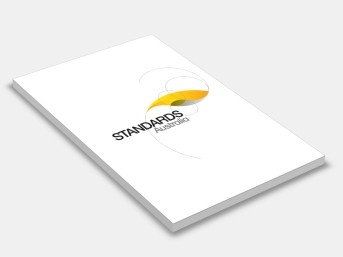AS 1428.1:2021 Design for access and mobility, Part 1: General requirements for access - New building work
Standards Australia
Supersedes: AS 1428.1-2009 Amd 2:2017 Design for access and mobility, Part 1: General requirements for access
Supersedes: AS 1428.1-2009 Design for access and mobility, Part 1: General requirements for access - New building work
Draft Designation: DR AS 1428.1:2020This document is part of a series that comprises the following:
AS 1428.1, Design for access and mobility, Part 1: General requirements for access — New building work (this Standard)
AS 1428.2, Design for access and mobility, Part 2: Enhanced and additional requirements — Buildings and facilities
AS/NZS 1428.4.1, Design for access and mobility, Part 4.1: Means to assist the orientation of people with vision impairment — Tactile ground surface indicators
AS 1428.4.2, Design for access and mobility, Part 4.1: Means to assist the orientation of people with vision impairment — Wayfinding signs
AS 1428.5, Design for access and mobility, Part 5: Communication for people who are deaf or hearing impaired
The objective of this document is to provide building designers and users (architects, property owners and regulators) with the minimum design requirements for new building work to enable access for people with disabilities.
Because of the variety of situations which may need to be addressed when designing buildings and facilities, it is seen as necessary for this document to provide a range of data so that the requirements for access can be met and allow for flexibility in design where limitations are imposed by other building conditions. The intention is to make this document a practical reference document for designers, particularly with regard to problem areas such as doorways and sanitary facilities.
The National Construction Code (NCC) and Disability (Access to Premises — Buildings) Standards define where access for people with a disability is required and reference a number of Australian Standards (including this document) to provide technical solutions to meet deemed-to-satisfy provisions.
The terms “normative” and “informative” are used in Standards to define the application of the appendices to which they apply. A “normative” appendix is an integral part of a Standard, whereas an “informative” appendix is only for information and guidance.
The use of Notes in this document are of an advisory nature only to give explanation or guidance to the user on recommended design considerations or technical procedures, or to provide an informative cross-reference to other documents or publications. Notes do not form a mandatory part for conformance to this document.
Originated as AS CA52.1-1968. Previous edition AS 1428.1-2009.
This document specifies the design requirements for new building work, as required by the National
Construction Code (NCC) and the Disability (Access to Premises — Buildings) Standards (Premises Standards), to provide access for people with disabilities. Particular attention is given to —
(a) continuous accessible paths of travel and circulation spaces for people who use wheelchairs;
(b) access and facilities for people with ambulatory disabilities; and
(c) access for people with sensory disabilities.
NOTE 1: The NCC and Premises Standards set out requirements for other features of the accessible built environment not covered in this document, such as lifts, hearing augmentation, tactile ground surface indicators, signage, glazing, lighting, car parking and toilet numbers, and distribution.
This document does not include requirements for —
(i) wheelchairs that have dimensions exceeding those shown in Figure 1; or
(ii) motorized scooters.
NOTE 2: Information on vision impairment is given in Appendix C.
Contents:
Section 1: Scope And General
Section 2: Dimensions
Section 3: Continuous Accessible Paths Of Travel
Section 4: Floor Or Ground Surfaces On Continuous Accessible Paths Of Travel And Circulation Spaces
Section 5: Signage
Section 6: Tactile Ground Surface Indicators
Section 7: Walkways, Ramps And Landings
Section 8: Stairways
Section 9: Handrails
Section 10: Doorways, Doors And Circulation Space At Doorways
Section 11: Switches And General Purpose Outlets (Power Points)
Section 12: Sanitary Facilities
Section 13: Sanitary Compartment For People With Ambulant Disabilities
Section 14: Grabrails
Section 15: Assembly Buildings
Appendix A: (Informative) Examples Of Kerbs
Appendix B: (Informative) Measurement Of Luminance Contrast Between Building Elements
Appendix C: (Informative) Vision Impairment
Access for People with Disabilities.
Association of Consultants in Access Australia; Australian Association of Occupational Therapists; Australian Building Codes Board; Australian Industry Group; Australian Institute of Architects; Australian Institute of Building Surveyors; Australian Institute of Quantity Surveyors; Austroads; Blind Citizens Australia; Deafness Forum of Australia; Department of Industry, Science, Energy and Resources; Engineers Australia; Housing Industry Association; Human Factors and Ergonomics Society of Australia; Master Builders Australia; Physical Disability Australia; Property Council of Australia; The Blind Foundation; Vision 2020 Australia.
